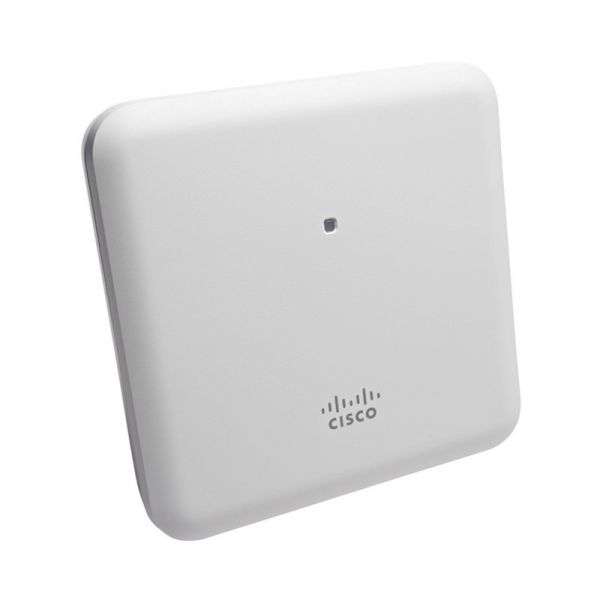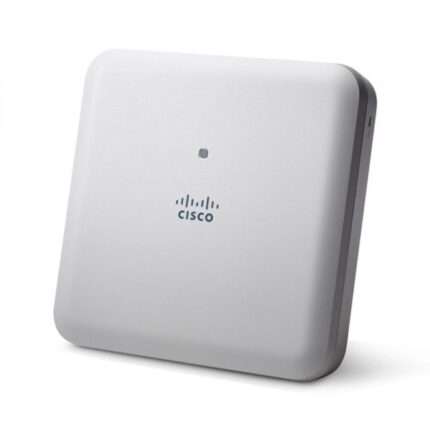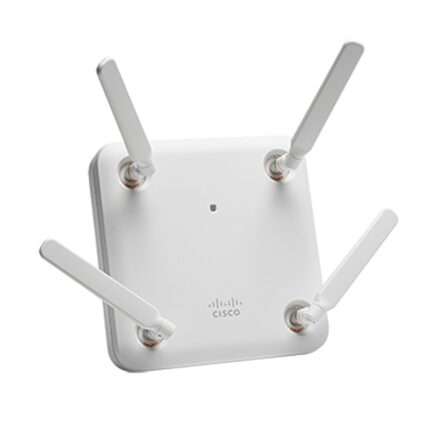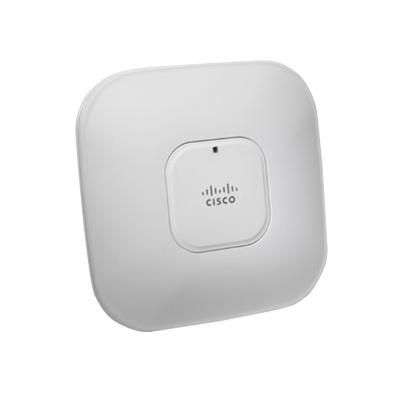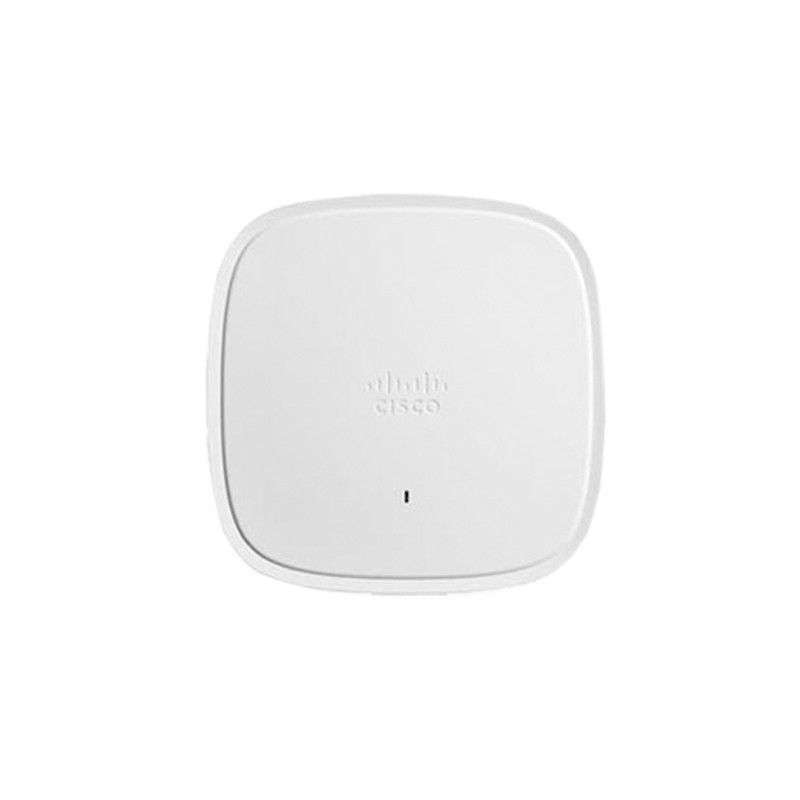AIR-AP1852I-E-K9 Specification
|
| Description |
802.11ac Wave 2 Access Point, 4×4:4, Internal-Ant, E Regulatory Domain |
| Software |
Cisco Unified Wireless Network Software Release with AireOS wireless controllers:
8.1 MR1 or later for the Cisco Aironet 1850 Series Access Points |
| Regulatory Domain |
E (E regulatory domain):
– 2.412 to 2.472 GHz; 3 channels
– 5.180 to 5.320 GHz; 8 channels
– 5.500 to 5.700 GHz; 8 channels
(excludes 5.600 to 5.640 GHz) |
| Deployment modes |
Centralized local, Standalone, Sniffer, Cisco FlexConnect, Monitor, OfficeExtend, Mesh |
| Supported wireless LAN controllers |
Cisco 2500 Series Wireless Controllers, Cisco Wireless Controller Module for ISR G2, Cisco Wireless Services Module 2 (WiSM2) for Catalyst 6500 Series Switches, Cisco 5500 Series Wireless Controllers, Cisco Flex 7500 Series Wireless Controllers, Cisco 8500 Series Wireless Controllers, Cisco 5760 Series Wireless Controllers, Cisco Catalyst 3650/3850 Series switch with integrated controller
Cisco Mobility Express |
| 802.11n version 2.0 (and related) capabilities |
4×4 MIMO with four spatial streams
Maximal ratio combining (MRC)
20- and 40-MHz channels
PHY data rates up to 600 Mbps (40 MHz with 5 GHz)
Packet aggregation: A-MPDU (Tx/Rx), A-MSDU (Tx/Rx)
802.11 dynamic frequency selection (DFS)
Cyclic shift diversity (CSD) support |
| 802.11ac Wave 1 and 2 capabilities |
4×4 MIMO with four spatial streams, single-user MIMO
4×4 MIMO with three spatial streams, multiuser MIMO
MRC
802.11ac beamforming (transmit beamforming)
20-, 40-, and 80-MHz channels
PHY data rates up to 1.7 Gbps (80 MHz in 5 GHz)
Packet aggregation: A-MPDU (Tx/Rx), A-MSDU (Tx/Rx)
802.11 DFS
CSD support
Rogue device detection |
| Integrated antenna |
2.4 GHz, gain 3 dBi, internal omni, horizontal beamwidth 360°
5 GHz, gain 5 dBi, internal omni, horizontal beamwidth 360° |
| Interfaces |
1 x 10/100/1000BASE-T autosensing (RJ-45), Power over Ethernet (PoE)
1 x 10/100/1000BASE-T autosensing (RJ-45), AUX (used for Link Aggregation)
Management console port (RJ-45)
USB 2.0 (enabled via future software) |
| Indicators |
Status LED indicates boot loader status, association status, operating status, boot loader warnings, boot loader errors |
| Dimensions
(W x L x H) |
Access point (without mounting bracket): 8.3 x 8.3 x 2 in. (210.8 x 210.8 x 50.8 mm) |
| Weight |
3.12 lb (1.41 kg) |
| Environmental |
Cisco Aironet 1850i
Nonoperating (storage) temperature: -22° to 158°F (-30° to 70°C)
Nonoperating (storage) altitude test: 25˚C, 15,000 ft.
Operating temperature: 32° to 104°F (0° to 40°C)
Operating humidity: 10% to 90% (noncondensing)
Operating altitude test: 40˚C, 9843 ft. |
| System memory |
1 GB DRAM
256 MB flash |
| Input power requirements |
AP1850: 44 to 57 VDC
Power supply and power injector: 100 to 240 VAC; 50 to 60 Hz |
| Power draw |
20.9W
Note: When deployed using a Power over Ethernet (PoE) specification, the power drawn from the power sourcing equipment will be higher by some amount, depending on the length of the interconnecting cable. |
| Powering options |
802.3at
Enhanced PoE
Cisco power injector, AIR-PWRINJ4=
Cisco local power supply, AIR-PWR-C=
Cisco power injector, AIR-PWRINJ5= (Note:this injector supports 802.3af only)
802.3af
Note: If 802.3af PoE is the source of power, (1) the 1852e 2.4-GHz radio will shift to 2×3 from 3×4, (2) The USB port and AUX Ethernet port are disabled on both the 1852i and 1852e. |
| Warranty |
Limited lifetime hardware warranty |

